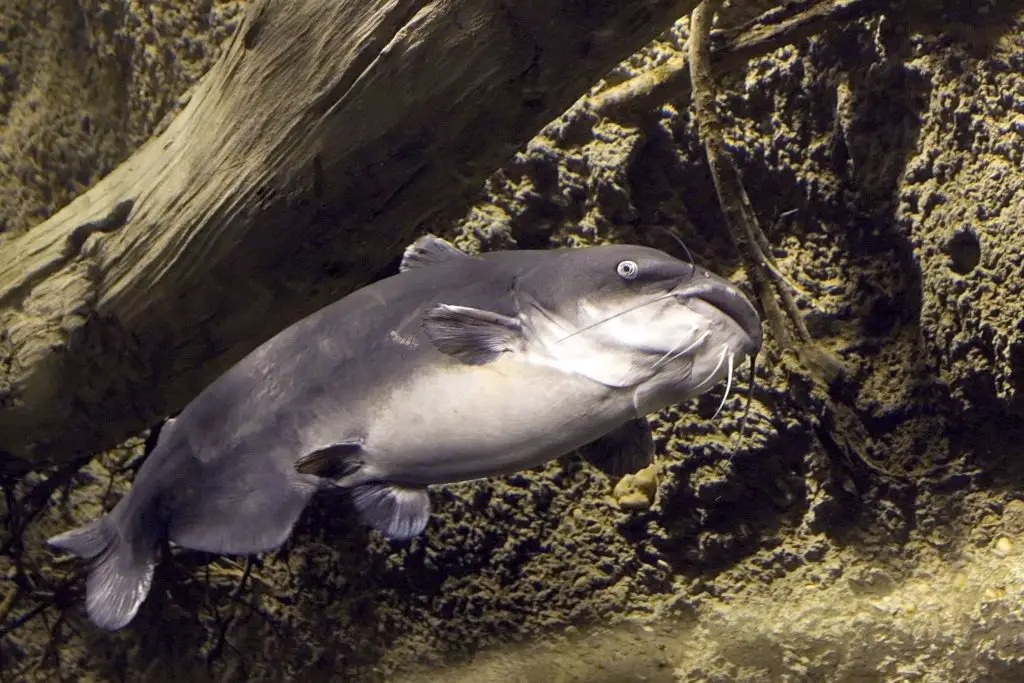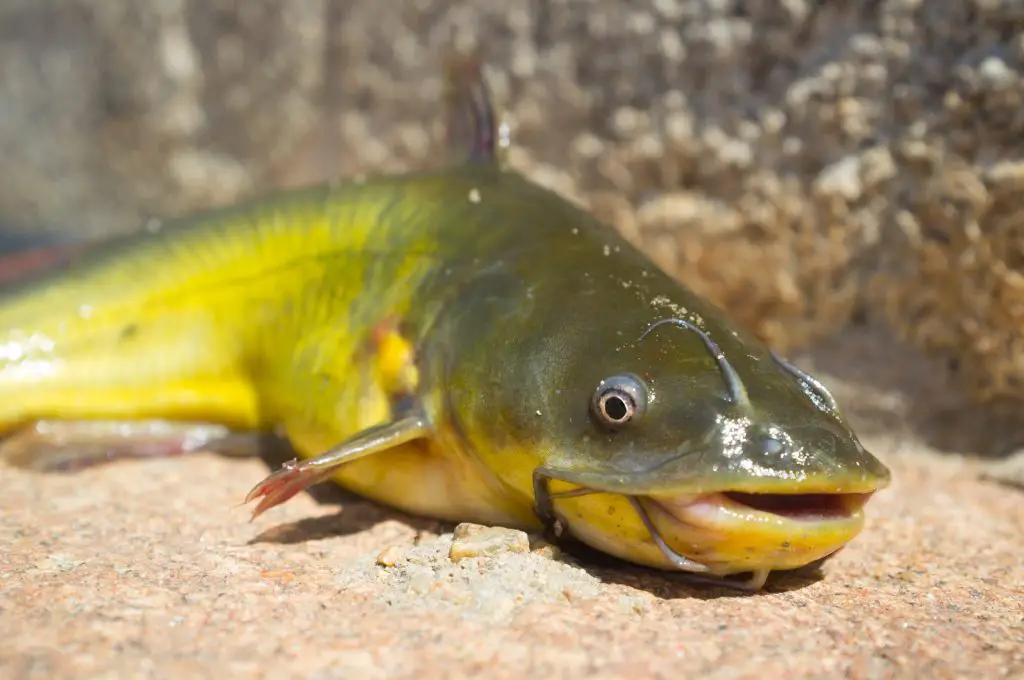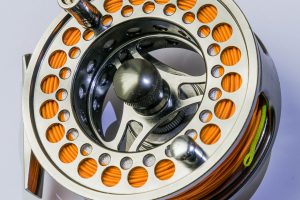A total of five species of catfish are found in Texas – Blue Catfish, Channel Catfish, Black Bullhead Catfish, Flathead Catfish, and Yellow Bullhead Catfish. Among these, the channel catfish are the ones that often fall into the hands of anglers. Flathead catfish are the tastiest of the bunch, but the bullhead catfish aren’t that popular, both due to their size and taste.

How To Identify the Catfish Species of Texas?
Here is a detailed discussion of the five catfish species in Texas and their distinguishable characteristics:

Blue catfish
Also known as the Humpback Blue, the blue catfish (Ictalurus furcatus) is one of Texas’s most economically important fish because the state houses one of the best trophy blue catfish fisheries in the US. This catfish has a silvery blue coloration, which gradually shades down to white on the belly.
They have four pairs of barbels, and their skin is smooth with no scales. You can distinguish a blue catfish with their forked tail, which no other catfish species of Texas except channel cat has. That aside, there are about 30-35 rays in their anal fins.
One of the largest species of catfish in North America, the blue catfish, can reach up to 65 inches in length. But the ones in Texas will mostly be within the 35 to 40 inch range. Moreover, blue catfish take a longer time to reach sexual maturity. They usually don’t become sexually mature until they reach 24 inches.

Channel catfish
Channel catfish (Ictalurus punctatus) are the most abundant in Texas. So, if you go fishing for catfish, there’s a higher chance of it being a channel. Just like blue catfish, a channel catfish also has a deeply forked tail, but their body color leans more towards the olive brown side.
The back and the sides may show a silvery blue coloration, while the belly is silvery white. Channel catfish have 24 to 29 soft rays in their anal fins, which is less than a blue cstfish’s. Their upper jaw bulges out more than their lower one. They can reach up to 52 inches in max length.
Channel catfish are often found in unexpected places, like bar ditches. During spawning season, the males are found in dark and secluded areas like rocks, logs, or drift piles. In the wild, channel cats reach sexual maturity way earlier than blue cats; they are usually mature by the time they reach 12 inches.

Flathead catfish
Most features of the flathead catfish (Pylodictis olivaris) are no different from those of a regular catfish. But their head is indeed flat, which makes them easy to identify. Also known as the shovelhead cat or the pied cat, this catfish species can reach up to 48 inches in length.
Flathead catfish are usually pale yellow in color, which is why they are often called “yellow cats.” The yellow deepens to a greyish brown on the back and sides. They also have black or brown spots or markings all over their bodies. A pale yellow or cream color paints their belly, unlike the full white of the blue and channel catfish.
Flathead catfish have long spines on their dorsal and pectoral fins. Their lower jaw projects outward more than the inner one, which is the opposite to that of channels. The tail fin is not too deeply forked. They have fewer than 16 rays in their anal fins, the lowest of all the catfish species found in Texas.

Yellow and Black Bullhead catfish
Also known as mudcat, the bullhead catfish can come in different colors. Both the yellow and black bullheads are found in Texas. Bullhead catfish never have a forked tail, but a straight-edged one. They also weigh more than three to four pounds. Combining these two characteristics, that’s how you know that the catfish is a bullhead.
The yellow bullhead catfish (Ameiurus natalis) has light-yellow coloration. It deepens to olive green on the back and lightens to a yellowish white on the belly. Often their body is spotted, but the density is much lesser than a flathead. On the other hand, black bullheads (Ameiurus melas) are black to deep greenish on the back, lightening to grey or white on the belly.
Bullhead catfish don’t have a forked tail, and it’s sometimes slightly rounded. Their barbels are white in color. There are about 17 to 21 rays on their anal fins. Of all the catfish species found in Texas they are the smallest in size. They can grow up to 20 inches long but are usually only a foot or so in length.
Which Is the Best Tasting Catfish in Texas?
A lot of people will unanimously agree that flathead catfish are the best tasting catfish out there. This is especially because of the diet of flatheads. After 10 inches, they eat shad, suckers, carp, largemouth bass, and sunfish, among other catfish.
The flesh of the flathead is white and sweet, with a firmer texture than a channel cat. It’s often compared to lobster broiled and dipped in lemon butter. A flathead tastes best when it is cleaned properly, which means removing the yellow fat from the meat.
Channel catfish also tastes amazing and is considered one of the best in North America. Their meat has a highly distinctive flavor. It’s mild, moist, and sweet, with fewer flakes than most other white fleshed fishes. Blue catfish doesn’t taste bad either. It’s basically considered a less muddy version of channel, but the meat is a bit fattier. If you don’t like the muddy taste in your fish, you’ll prefer blue over channel.
Bullhead catfish, due to living in stagnant waters, taste super muddy. However, if you fish the bullheads in fresh and clean water, they can be as tasty as the channels. Especially if they are cooked correctly.
This goes to show that every single catfish species in Texas is worth adding to your dinner menu. Most of them are also huge, so catching them will be a cool experience as well.











